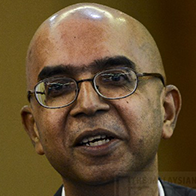In Malaysia, the same coalition has ruled the nation since Britain granted Malaya independence in 1957. Economically, what has changed in 58 years?
The British brought together the states on the peninsula and formed first the Federated Malay States (FMS) then Malaya in order to supply raw materials to their industrial revolution.
To achieve their mission, the British needed capital and people. They could get capital, but people were a problem.
The locals, accustomed to serfdom, refused to do hard labour because they knew the risks would be theirs, but not a fair share of the rewards.
So the British formed alliances with the local rulers and brought in migrant labour just as some Malay rulers had done before. For example, in 1844, 53 years before the formation of the FMS, Temenggung Ibrahim of Johor brought in Chinese kangchu to cultivate pepper and gambier; the kangchu even supplied capital.
Pre-FMS, relatively small numbers of migrant workers had been imported. The British imported vast numbers. (The Temenggung’s successor preferred to engage towkay and kongsi, who in turn managed kangchu.)
The British assigned the migrant workers to sectors of the economy according to race. Broadly speaking, Indians were assigned rubber planting, constructing infrastructure, administering, policing and educating; Chinese were assigned tin mining and trading; Malays were assigned rice and coconut growing.
So, when the British departed, migrant workers outnumbered the locals in many states and race was strongly associated with occupation.
Also, much of the capital employed was British; so much so that the office of Inspector General of Police was occupied by a Brit until 1966 when Dato Sir Claude Fenner retired.
Malaya generated much wealth. According to Professor Charles Hirschmann, “in 1926 exports from British Malaya were worth more than the exports from all the other British dependencies combined;” and, “by 1957 Malaya had been the world’s largest producer of natural rubber and tin for more than 50 years.”
As early as 1960 James Puthucheary had pointed out that wealth in Malaya was generated by the labour of workers and amassed by owners/managers.
With that background, we may now say that the post-independence economic issues included (1) dependence upon migrant workers; (2) association of race with occupation and (3) concentration of income and wealth in a few hands.
Where are we today, 58 years on?
Migrant workers
We still depend upon migrant workers. There are 6.7 million migrant workers in Malaysia. Here’s some perspective: in 2013, in elementary occupations, migrant workers outnumbered Malaysian Indians by 8 to 1.
We speak of and treat migrant workers as resources, to be used and abused. Not as humans. We even have North Koreans who slave in mines in Sarawak. The poor slave, the rich reap the rewards.
Association of race with occupation
In the public sector, in the peninsula, race is still associated with occupation. The civil service, the armed forces, the police, etc. are dominated by one race.
In Malaysia, 90% of the 1.6 million civil servants are Bumiputera. The percentage is higher in the peninsula, where in 1970 the percentage of Malays in the civil service was 64.5%.
In the professional occupations, much has changed. Here’s a selection of changes in the 35 year period from 1975 to 2010:
· The percentage of Bumiputera engineers increased from 7.5% to 61.7%;
· The percentage of Indian doctors decreased from 38.7% to 19.3%;
· The percentage of Chinese dentists decreased from 75.8% to 32.5%.
Concentration of income and wealth
Wealth concentration remains an issue.
In 1970, one small group (non-residents) owned 60.7% of share capital in Malaysia.
32 years later, in 2012, 55.7% of wealth was owned by another small group: the richest 20% of Malaysian households; the bottom 40% owned a mere 7.7% of the wealth (MHDR 2013, Fig. 3.31).
According to Khazanah Research Institute, in 2012 the bottom 13.5% of EPF savers had only RM3,580 in their accounts while at the other end Malaysians were the top foreign home buyers in Singapore and the 4th largest buyers (4%) of new London properties.
In 2014 every ringgit of income received by the average household in the bottom 40% of households was matched by RM6.18 of income received by the average household in the top 20% of households.
What has changed in 58 years?
There is more infrastructure and much less abject poverty. We depend upon foreign labour. The public sector is dominated by one race. There is massive inequality.
Many Malaysians think inequality is normal in Malaysia. In a 2014 poll conducted by the Pew Research Center, 52% of Malaysians agreed “knowing the right people is important for getting ahead in life.” We are on par with Russia and Pakistan.
Will the 11MP continue the serf-ruler model of development? – May 21, 2015.
* This is the personal opinion of the writer or publication and does not necessarily represent the views of The Malaysian Insider.


Comments
Please refrain from nicknames or comments of a racist, sexist, personal, vulgar or derogatory nature, or you may risk being blocked from commenting in our website. We encourage commenters to use their real names as their username. As comments are moderated, they may not appear immediately or even on the same day you posted them. We also reserve the right to delete off-topic comments